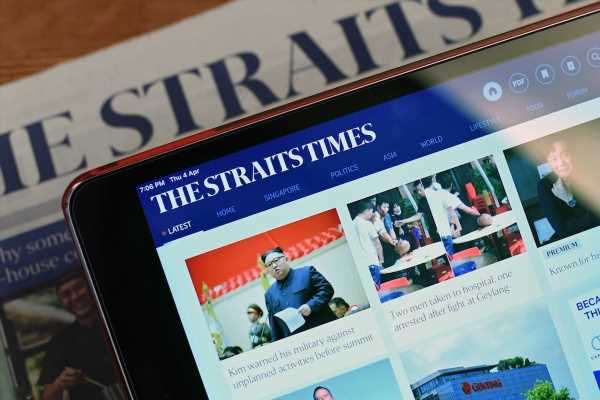Singapore is looking to develop next-frontier 5G applications to support its ambition to lead the global digital economy. Several projects have qualified for a grant from a $40 million fund set up by the National Research Foundation and the IMDA to accelerate this. The projects are in the following areas:
SMART MOBILITY
Real estate firm CapitaLand, map service provider Navinfo Datatech and telco TPG Telecom will be testing cloud-based driverless car navigation at Science Park 1 and and 2 over a 5G connection.
By shifting the processing of traffic data from an in-vehicle system to the cloud, it is hoped that the cost of autonomous vehicles can be reduced.
The firms will also be testing how quickly data can be obtained from numerous sources such as sensors on road infrastructure and other vehicles for navigation purposes.
CLOUD GAMING
Gaming accessories firm Razer and telco Singtel will be testing how 5G networks should be designed in an urban environment to allow consumers to stream and play games with rich visual details using their mobile phones. The mobile connection must have minimal lag for enjoyable gameplay.
Environmental interference such as how buildings, street furniture, trees and wet weather affect gameplay will also be studied in what is the first consumer 5G application trial in Singapore.
SMART PORT
Port operator PSA International has appointed telcos Singtel and M1 to conduct trials in the third quarter of this year to explore the use of driverless vehicles to move shipping containers round the clock.
This will allow PSA to load and unload more containers and turn ships around faster.
The telcos will also set up trials for the remote control of port equipment such as cranes. The trials will pave the way for the building of a state-of-the-art Tuas Port, expected to open from 2021 in stages, to reinforce Singapore’s position as a leading port in the region.
SMART FACTORY
The Agency for Science, Technology and Research’s (A*Star) Advanced Remanufacturing and Technology Centre has signed a memorandum of understanding with Singtel and industrial estate developer JTC Corporation to integrate 5G connectivity solutions into its smart Model Factory in Jurong.
The factory is a test-bed for advanced manufacturing tools, including smart sensors for tracking the location of driverless vehicles on factory floors. The trials will also explore the use of virtual reality teaching tools for training factory operators in, say, equipment maintenance.
Irene Tham
Rationale behind the moves
Singapore plans to issue licences to operate two full-fledged 5G networks and two smaller ones with limited coverage. Here is a quick guide to the key announcements and reasons.
Why is Singapore pushing for four 5G networks instead of two?
The Infocomm Media Development Authority’s (IMDA) plans became more aggressive after a two-month-long public consultation earlier this year, during which there were calls for the involvement of all four telcos here – Singtel, StarHub, M1 and TPG Telecom – to spur innovation and competition. IMDA heeded these calls.
As there are limited 5G airwaves for islandwide reach, IMDA cannot allow more than two nationwide networks in Singapore.
The alternative is to give out more licences to run smaller 5G networks and more of another type of airwaves – known as millimetre airwaves – to support their roll-out.
This approach will ensure that none of the four telcos, or any innovative ideas, will be missed out.
What are the benefits?
The smaller 5G networks will meet immediate industrial needs – for example, in smart ports and factories to remotely operate cranes or vehicles to move shipping containers or goods round the clock.
Millimetre airwaves are in abundance, and 5G networks built using these can be rolled out as quickly as next year.
“They will be useful for consumer applications like virtual reality and augmented reality gaming,” said Mr Ramakrishna Maruvada, a regional telecoms analyst at Daiwa Capital Markets. He noted that telcos could monetise these applications first before spending more money to roll out the full-fledged 5G networks.
Plus, the 5G airwaves for islandwide reach (the 3.5Ghz band) will be available only in 2021.
“Singapore is already slower than South Korea, China and the United States, which have launched 5G services using a combination of the far-reaching 3.5Ghz airwaves as well as the millimetre airwaves,” said Mr Sachin Mittal, head of telco research at DBS Bank. He expects Singapore to be the first country in South-east Asia to launch 5G services.
How is Huawei going to be involved in this exercise?
The two 5G networks with nationwide coverage must be built with the most advanced technologies – called “standalone” 5G technologies – that do not piggyback on existing 4G technologies.
This will give local telcos an opportunity to pick equipment suppliers from scratch to realise the full benefits that 5G networks promise.
Any “lock-in” to existing 4G vendors for a cheap and quick migration to 5G – an advantage that Huawei has over rivals – will not be able to influence telcos’ long-term decisions on 5G.
However, 5G networks built to work on the millimetre airwaves are allowed to piggyback on existing 4G technologies at the start until more advanced technologies are available.
Unlike some countries which have banned Huawei over espionage concerns, Singapore has not barred any vendors, but says systems must meet security requirements.
What will my surfing experience be like if only half of Singapore has 5G coverage?
Users of 5G handsets moving out of a 5G coverage area will not experience surfing disruption as they will automatically be connected to a 4G connection with the same telco. Hopping across different telco networks is not possible.
Irene Tham
Source: Read Full Article

